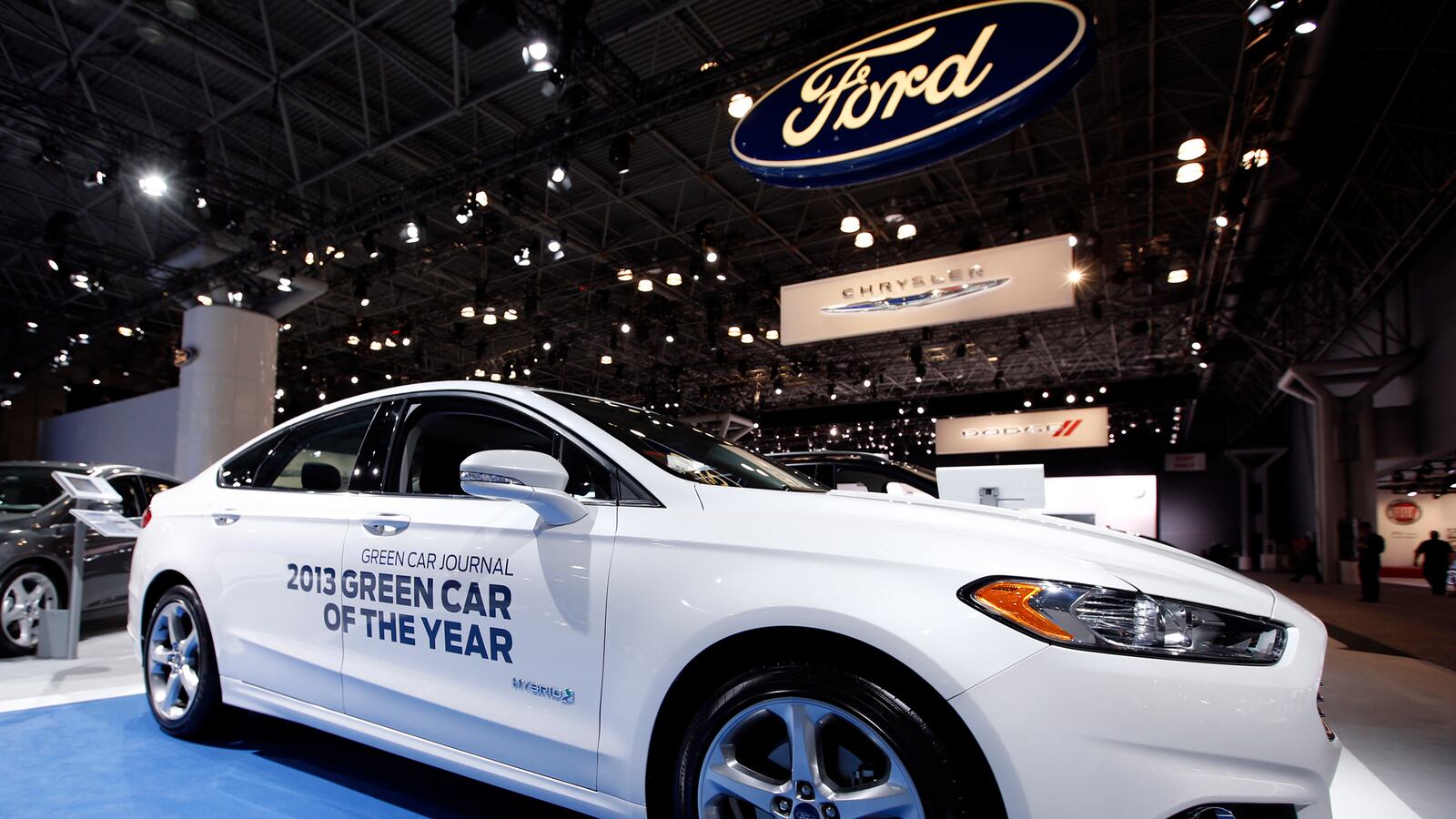There’s an unlikely new player in the hybrid-car market: Ford.
For much of the past decade, innovation in using electricity to power vehicles has been powered either by foreign companies or by startups: Toyota has made the Prius a household name, and the three Prius models account for about 45 percent of hybrids sold every month. Nissan has invested huge sums to produce the Leaf, an all-electric vehicle made in Tennessee. Tesla Motors, the Silicon Valley startup, sold more pure electric vehicles in April than any other company—about 2,100, compared with 1,937 Nissan Leafs.

Aside from the Chevy Volt, a plug-in hybrid, the car companies formerly known as the Big Three—GM, Ford, and Chrysler—have largely been spectators in the hybrid and plug-in vehicle category. It’s not that they’ve been sitting still when it comes to gas mileage. In fact, they’ve been working aggressively to improve the mileage of their cars. Chrysler’s 2014 Jeep Grand Cherokee can get up to 30 miles per gallon, an increase of 45 percent from the period model year. Ford and GM, with their Ecoboost and E-assist systems, respectively, have introduced so-called light-hybrid technologies into existing car models, which provide significant incremental gains in mileage.
The sales figures reported by the automakers last week show the Big Three making strides. Hybridcars.com posts a helpful monthly sales dashboard that breaks down the market for hybrids, electric cars, and vehicles that run on diesel. The April report, released last Friday, reveals that the hybrid category, which accounts for a small but growing chunk of overall car sales, is still dominated by foreign automakers. In April, U.S. consumers purchased at least 1,000 units of 12 different hybrids. Of those, nine were produced by Japanese or Korean automakers (Toyota, Kia, and Hyundai).
But there was a new contender on the scene: Ford, which sold 3,625 Fusion hybrids in April—more than four times the number it sold in April 2012. And it sold 3,197 of the C-Max Hybrid, a crossover model that didn’t exist last year. In all, Ford accounted for 6,822 of 42,804 hybrids sold in April—about 16 percent of the total.
Ford also makes plug-in versions of its two hybrid models. And in the plug-in market (also generally referred to as the electric-car sector), Ford notched significant gains in April. Ford sold 411 C-Max Energi plug-in vehicles, 364 Fusion Energi plug-ins, and 147 Focus EVs—for a total of 922 cars, or about 13 percent of the 7,138 plug-ins sold in the month. None of those Ford models existed last April. (By contrast, Toyota sold just 599 units of its plug-in Prius in April.)
The hybrids and plug-ins accounted for about 3 percent of Ford’s April sales. So the numbers are small. But they’re significant for Ford because, in the parlance of Detroit, these are “conquesting” vehicles.
It’s one thing to get an existing Ford owner to trade in her five-year-old Escape for a new one. It’s quite another thing to attract a former Prius owner to choose a Fusion hybrid as her next car. And that’s what these new vehicles are doing. I drove the C-Max Energi hybrid in April—it’s got all the techno-wizardry that Prius owners will recognize—a dashboard laden with data and digital green leafs that grow as you drive in a fuel-efficient manner.
Ford has engineered a remarkable turnaround in the last several years. Alone among the U.S.-based carmakers, it avoided bankruptcy, restructured its business, and weathered the deep recession in comparatively good health. That wasn’t enough to make its products cool in lucrative markets like Los Angeles, San Francisco, and Washington, D.C. But the hybrids are.
In effect, the hybrids and plug-ins are allowing Ford to gain new customers in new geographic areas, and to take market share from competitors. Overall, sales of Ford brand vehicles were up 17.8 percent in April 2013 from April 2012. By contrast, Toyota’s sales in the U.S. fell 1.1 percent between April 2012 and April 2012. “We’re turning, conquesting and growing our sales the fastest in the largest hybrid markets in the country,” Ford spokesman Erich Merkle told Bloomberg News last week.






